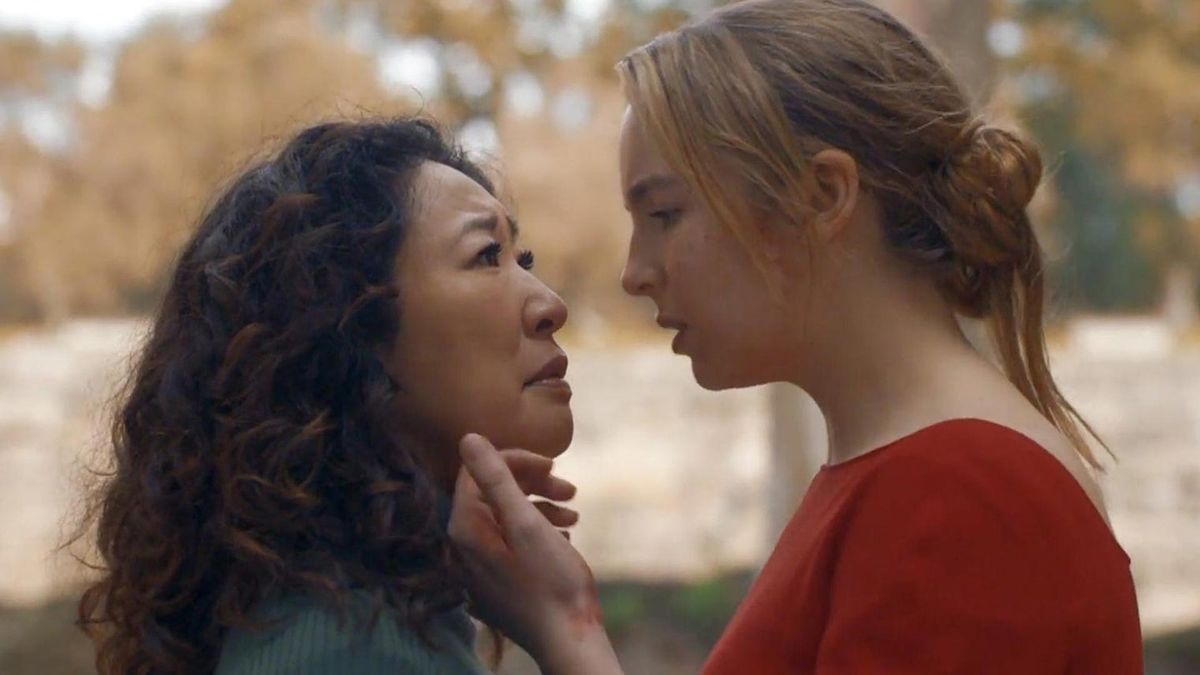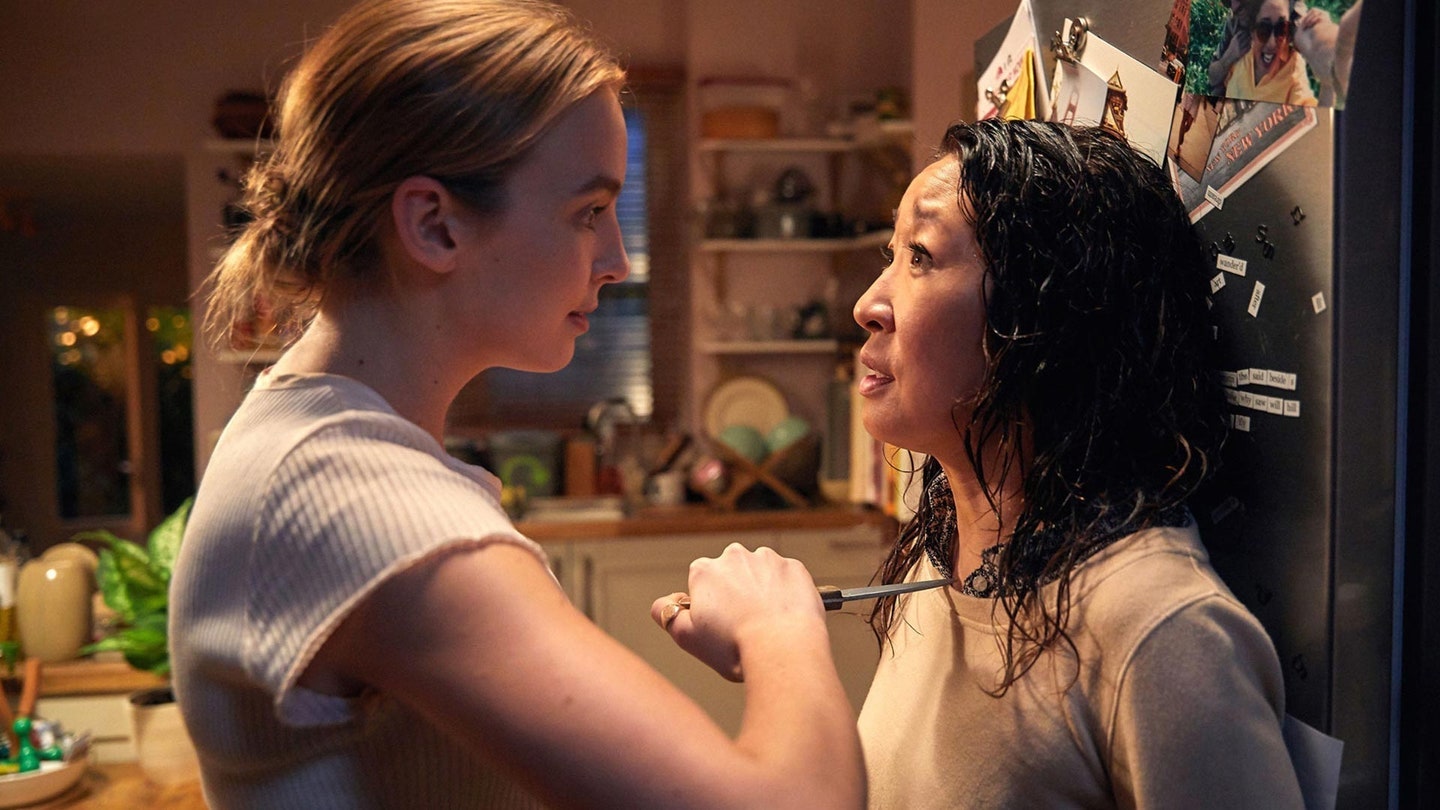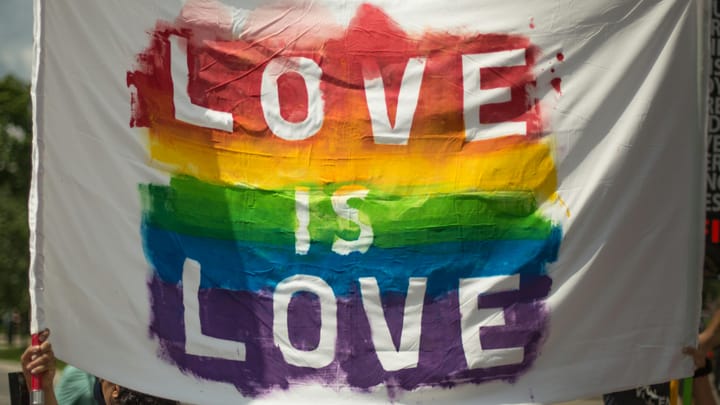Voices: Is the deadly duo of “Killing Eve” an example of toxicity in queer relationships?

A few minutes every morning is all you need.
Stay up to date on the world's Headlines and Human Stories. It's fun, it's factual, it's fluff-free.
Queer women ache to have a wise lesbian with silver hair and wrinkles swan into our lives and tell us the secret to queer bliss. But as a minority, we often grow up without a consistent adult role model in sight. Like any ordinary adolescent, we turn to the media to guide our love lives. Unfortunately for lesbians, our representation in the media lags behind our heterosexual and even gay male counterparts.
The Motion Picture Production Code, commonly known as “The Hay’s Code,” of 1930 barred LGBTQ+ representation on screen. Even when queer characters began to appear in the media, creators murdered them or labeled them corrupt. So is it any wonder that queer women struggle to maintain healthy romantic and sexual relationships when society demonizes and exploits our identity?
Our storylines reek of heartbreak and end in tragedy, often in the shape of problematic power dynamics such as the classic lesbian teacher-student romance or toxic fantasies such as the unattainable straight love interest. As the media puts more and more sapphic stories on screen, both queer experiences and implicit biases make it to our television. Yet, despite rising representation, gay men in media still outnumber gay women (and often receive more screen time, thus delivering fleshed-out characters).
People find queerness more palatable when the media fulfills their expectations and validates stereotypes. The queer coded villain, most notably in Disney movies, remains an unmoveable classic.
The worst queer trope that plagued my romantic escapades throughout high school took the form of the queer femme fatale, the manipulative but irresistible bisexual. What is it about these characters that so easily seduces gay women? Since we live in a society that both menaces and erases us, a penchant for life-or-death, high-stakes romance only makes sense.
The draw of toxicity

“Killing Eve’s” charming psychopathic assassin Villanelle does not disappoint in this regard. MI-6 agent Eve Polastri struggles through an intense identity crisis upon Villanelle’s entrance. Her obsession with Villanelle’s murderous flare consumes her so that she forgets about the sex she offered to her husband less than a minute ago.
Her character’s central conundrum becomes apparent almost immediately: is Eve’s obsession with Villanelle a manifestation of her hunger for excitement and danger? Does she really want a normal, healthy marriage, or is she – as her husband, whose personality consists of a mustache and his marriage to Eve, puts – “getting off on chasing a psycho?”
The strange attraction between Eve and Villanelle expands sexual boundaries on TV. Here, in moments of tangible tension, despite having brief moments of face-to-face interaction, comfortable stereotypes and tropes end, and unusual territory begins.
Their mutual fascination with one another tangles together in a dance of desire, appetite and murder. While other agents focus on the trail that leads to Villanelle’s employer, an elusive operation called the Twelve, Eve insists that Villanelle is the key to everything. She hangs on Villanelle’s every breath, hunting her backstory, her motivation, her daily routine. She shamelessly takes advantage of Villanelle’s obsession with her while her colleagues and superiors warn against the risk of a relationship with a psychopath. As a woman who is only just realizing her queer identity, Eve has fallen into a common trap.
I see myself reflected in Eve’s willful lack of self-awareness. But no one warned me against the risk of a relationship that only breeds toxicity. Everyone around me treated my first heartbreak as if it didn’t happen. For the past seven years of being out, anything remotely queer that came out of my mouth triggered thick discomfort in the air. I felt myself drifting.
Self-destruction
I think it took me so long to gain confidence in my identity and come out as a lesbian because of the absence of validation in my life. By the end of senior year, the people in my life had erased me and hadn’t even bothered to brush off the dirty remnants of the erasers. My parents didn’t have the capacity to support me, a budding lesbian careening toward self-destruction through my infatuation with one of my high school friends. Even my closest friends pretended nothing was happening.
I loved her soft dark hair and hazel eyes. I loved her cold curiosity. It wasn’t until senior year that she confessed she had a crush on me. She blushed and tried to pretend it wasn’t a big deal with her high, aloof voice. She dismissed it as a feeling of the past. A year of games ensued, similar to the cat-and-mouse of “Killing Eve.” I let her strip apart what was left of a life already off-balance. Mental illness, college applications and familial trauma had knocked me down. All she had to do was kick.
We haven’t spoken in four years, but sometimes she texts me. Maybe hoping to assuage her guilt, or perhaps waiting to see if I come when she calls. I can’t help but see her in Villanelle – the childishness and narcissistic disregard for others. An image of her mouth curled in a side smile emerges from Villanelle’s face. She raises her eyebrows at me and runs down to the basement of our high school, where theater ghosts dwell and girls vandalize the walls.
She hides, and I know she wants me to find her. It’s a game. Will she or won’t she bestow her attention upon me? Will she insult me or praise me? Will she flirt with me or flirt with someone else in front of me?
The back and forth tore me apart, and I self-isolated until I lost myself. To this day, no one knows how I let her root around inside me to amuse herself. No one knows how she left a sickness inside that still nauseates me when I think about what I allowed myself to do. I knew who she was, just like Eve knows who Villanelle is.
We accept the relationship models we see

Warning: spoilers ahead. Eve catches Villanelle off guard in the first season finale when she stumbles into her Paris apartment against her superior’s directive to return to London. She finds a beautiful flat with towering walls covered in a faded robin’s egg blue. Elegance drips from the apartment. She finds a row of extravagant perfumes, a wardrobe teeming with expensive clothes, a drawer filled with wigs and weapons and a fridge stocked solely with champagne.
As her eyes move over the apartment, we see an honest Eve, cracked upon and exposed. She rifles through Villanelle’s things with rising frustration, and her face reveals an aspect of Villanelle that both attracts and repels her. Her beloved assassin lives a life of unbridled hedonism. While Eve slogged through the boredom of state security, Villanelle killed her way to luxury and adventure.
She snatches an unopened bottle of champagne and smashes it on the floor. And another. Laughter falls from her throat, almost in relief. Her hands find clothes and rip them from their hangers.
I want a scene where I can break open, where laughter falls from my throat, and I smash the things I loved and hated about her and every other toxic relationship that followed. I want my queer heartbreak to be seen as it never was when I was 18.
An exhausted Villanelle drags herself into the apartment. I think about the panic I feel whenever I see a girl with short dark hair and trendy clothes and the relief and disappointment that runs cold through me when I see her face and it isn’t her.
Eve points a gun at Villanelle but collapses on the bed fitted with sheets Villanelle obtained from a particularly dramatic assassination involving a poisonous hairpin. As the two sit a foot apart, Eve confesses that her day revolves around thoughts of Villanelle’s mouth and eyes, thoughts of what Villanelle eats for breakfast, what friends she has, what shampoo she uses and what she feels when she kills someone.
I never had the vulnerability to admit my infatuation. Instead, I’d rather demand that she unspool her brain in front of me to prove that she cared.
Two seasons later – after Eve slid a dagger inside Villanelle; after Villanelle shot Eve in the back and left her for dead; after a violent first kiss on a bus; after a season of individual soul-searching – they meet in a dimly lit tea room and awkwardly sway as they laugh about their lives together. “Killing Eve’s” Season 3 finale dances around in a fanfic fever dream filled with color.
The gravity of the episode exudes respite from the violence and manipulation in their dynamic. Eve and Villanelle come together as individuals who have accepted – but still fear – how they’ve changed each other. Eve can’t return to the normal life she’s destroyed, and Villanelle has lost her taste for killing. Their all-or-nothing relationship burned down everything in its path. How can queer audiences not love a duo so irrevocably seductive and yet destructive?
Following Paul’s murder at Carolyn’s hands, Eve runs into the streets of London, terrified by what she and Villanelle have laid bare. Villanelle dashes after her in a striking “La La Land”–esque yellow pea coat (she may have sworn off murder, but her fashionable flare still blesses our screens). They lean beside each other, breathless, on the rail of Tower Bridge, lit by a blue glow and city lights glittering on the Thames.
“When I try and think of my future I just see your face over and over again,” Eve confesses and stares helplessly at Villanelle with wide, pleading eyes.
“It’s a very beautiful face,” she quips in her husky Russian accent.
They laugh together and reflect on the toxicity of their relationship. “I think my monster encourages your monster,” Villanelle says, and Eve admits that she wanted it to.
Eve needs it to stop. Is “it” her all-consuming love for Villanelle or the demons Villanelle coaxes from her? Maybe both. Villanelle instructs Eve to stand up and look at her. Her eyes relish Eve’s face before she turns her back and tells Eve to do the same. They sigh and close their eyes with their backs to one another, and as Villanelle dips her head to rest against Eve’s, the intense tenderness of their touch sends shivers through the air.
Villanelle’s face hardens. “Now we walk, and we never look back.”
Eve panics at the thought of never seeing her again and starts to protest, but Villanelle insists. They slowly walk away from each other, but as if an invisible thread connects them, they both stop. They look back.
The inability to walk away from a toxic relationship drives “Killing Eve,” and we love every moment of it. We accept the relationships models we see.
It’s why so many straight women stay with abusive partners and accept abysmal behavior. It’s why lesbians pine for villains. It’s why we can’t quit our all-or-nothing mentality. 2022 will reveal what happens after the scene on Tower Bridge, but until then, let’s seek healthier representation.
Have a story to share? Get in touch at contributors@themilsource.com




Comments ()